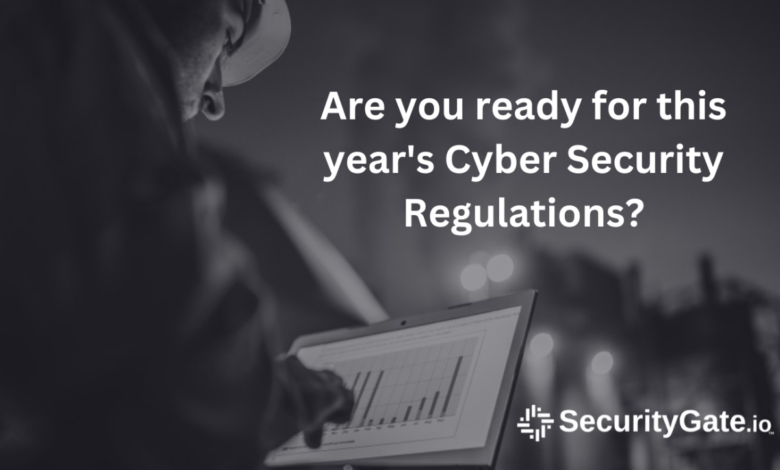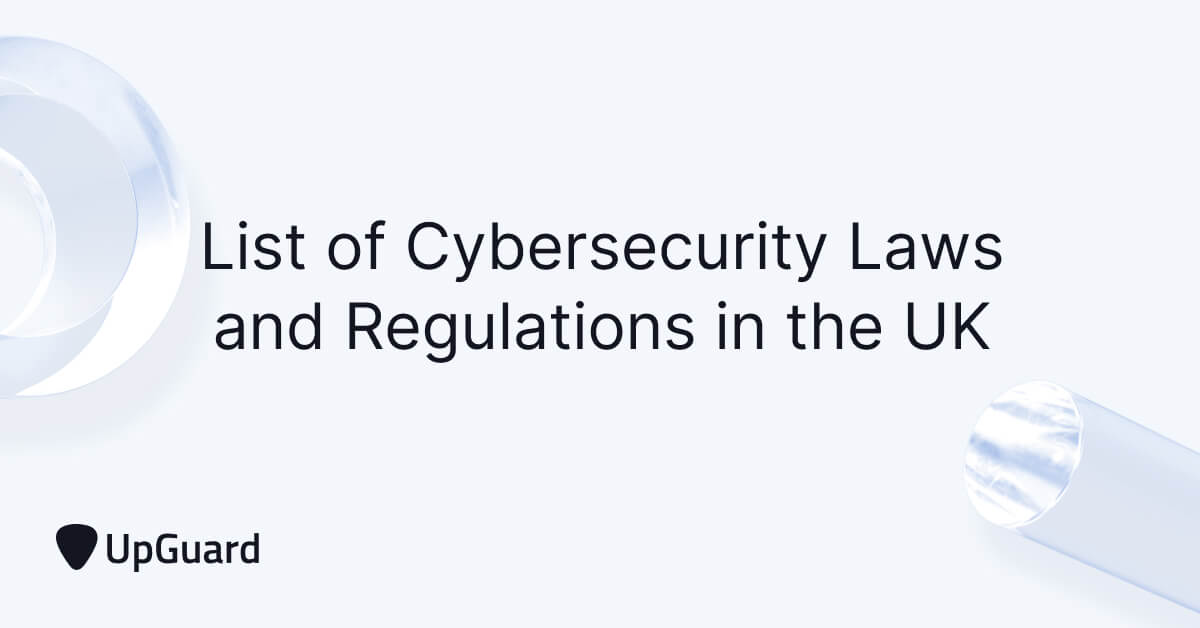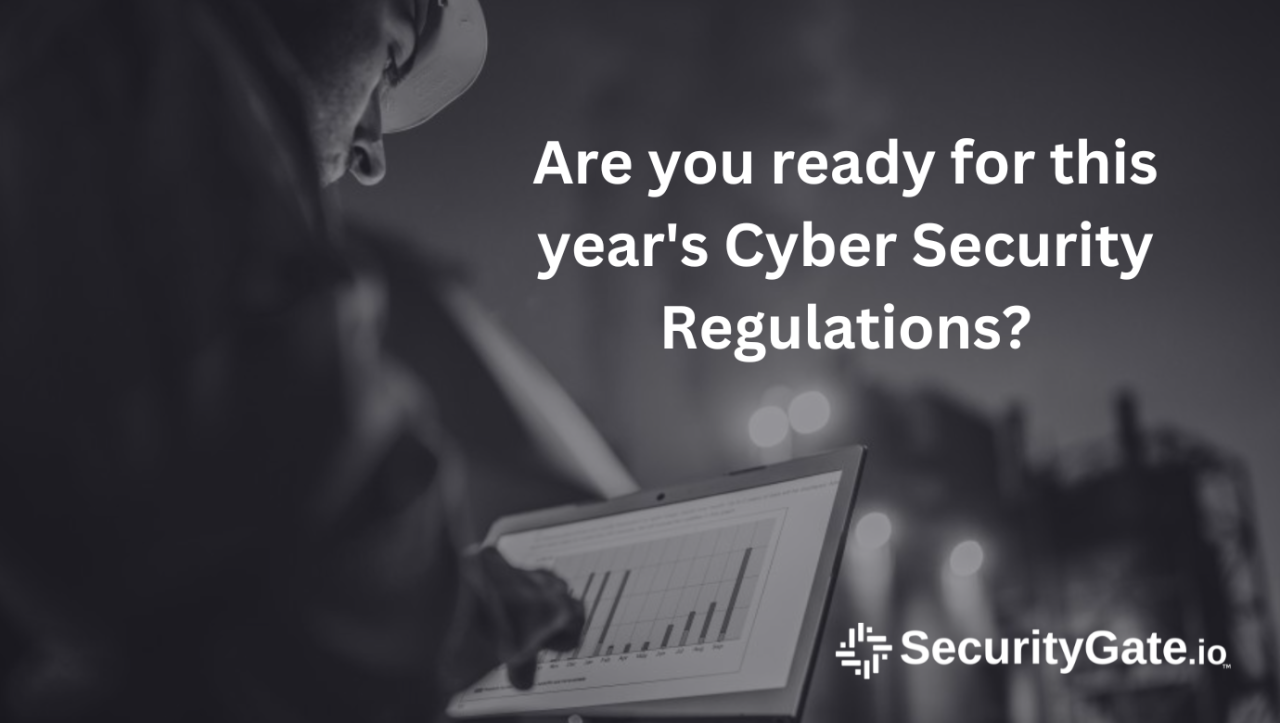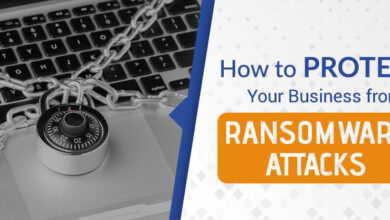
Cybersecurity Regulations How Laws Apply to Your Business
Cybersecurity regulations how do laws apply to your business – Cybersecurity regulations: how do laws apply to your business? It’s a question every business owner should be asking, regardless of size or industry. From protecting sensitive customer data to avoiding crippling fines, understanding the legal landscape of cybersecurity is crucial for survival in today’s digital world. This isn’t just about ticking boxes; it’s about building a robust security posture that protects your business, your reputation, and your bottom line.
We’ll delve into the key regulations, practical steps for compliance, and the potential consequences of ignoring these vital legal requirements.
Navigating the complex world of cybersecurity regulations can feel overwhelming, but it doesn’t have to be. This post breaks down the essentials, offering clear explanations and actionable advice to help you understand your obligations and build a secure foundation for your business. We’ll cover everything from identifying relevant regulations to implementing effective risk management strategies and training your employees.
Let’s get started!
Identifying Applicable Cybersecurity Regulations
Navigating the complex world of cybersecurity regulations can feel overwhelming, especially for businesses operating in multiple jurisdictions or handling sensitive data. Understanding which regulations apply to your specific operations is crucial for avoiding hefty fines and reputational damage. This post will delve into identifying relevant regulations, comparing key examples, and outlining a decision-making process for ensuring compliance.
Identifying Relevant Cybersecurity Regulations
The first step is to pinpoint the regulations that directly impact your business. This depends heavily on your industry, location, and the type of data you process. For example, a healthcare provider will face different regulatory requirements than an e-commerce business. Geographic location is also paramount, as countries and states often have their own unique cybersecurity laws.
Finally, the sensitivity of the data you handle – personally identifiable information (PII), protected health information (PHI), financial data – significantly influences the applicable regulations. Consider factors like data storage location, data transfer methods, and the involvement of third-party vendors.
Comparison of Key Cybersecurity Regulations
Let’s compare three significant regulations: the California Consumer Privacy Act (CCPA), the General Data Protection Regulation (GDPR), and the Health Insurance Portability and Accountability Act (HIPAA). These represent different sectors and geographic scopes, illustrating the diverse regulatory landscape.
| Regulation | Geographic Scope | Industry Focus | Key Requirements |
|---|---|---|---|
| CCPA | California, USA | Broad, consumer-focused | Data breach notification, consumer rights (access, deletion, opt-out), data minimization |
| GDPR | European Union and EEA | Broad, data-focused | Data protection by design, consent, data breach notification, data subject rights, stringent data transfer rules |
| HIPAA | USA | Healthcare | Protection of protected health information (PHI), security rules, privacy rules, breach notification |
These regulations intersect in several ways. For example, a company operating in California and processing the PHI of EU citizens would need to comply with all three – CCPA for California residents’ data, GDPR for EU citizens’ data, and HIPAA for the PHI. The overlap necessitates a comprehensive approach to data security and compliance, often requiring a layered security architecture to meet the diverse requirements.
Decision-Making Process for Regulatory Compliance
A structured approach is vital to navigate the complexities of multiple regulations. The following flowchart illustrates a simplified decision-making process:[Flowchart Description: The flowchart would begin with a “Start” node. The first decision point would be “Does your business operate in the EU or handle EU citizen data?”. A “Yes” branch leads to “GDPR Compliance Required,” while a “No” branch leads to the next decision point: “Does your business operate in California or handle Californian residents’ data?”.
A “Yes” branch leads to “CCPA Compliance Required,” and a “No” branch leads to the next decision point: “Does your business handle Protected Health Information (PHI)?”. A “Yes” branch leads to “HIPAA Compliance Required,” and a “No” branch leads to “Assess other applicable regulations (state, federal, industry-specific).” All compliance branches would converge at a final “Compliance Measures Implemented” node, followed by a “End” node.
]
Data Security and Privacy Requirements
Navigating the complex world of cybersecurity regulations requires a deep understanding of data security and privacy requirements. These regulations, varying by jurisdiction and industry, dictate how organizations must handle sensitive information, imposing significant responsibilities on businesses of all sizes. Failure to comply can lead to substantial fines, legal battles, and irreparable damage to reputation.Data security and privacy regulations mandate specific controls and procedures to protect various data types.
Understanding these requirements is crucial for minimizing risk and ensuring compliance.
Data Security and Privacy Requirements by Data Type
Different regulations apply depending on the type of data your business handles. Personally Identifiable Information (PII), such as names, addresses, and social security numbers, is subject to stringent protection under laws like GDPR and CCPA. Protected Health Information (PHI), governed by HIPAA in the US, requires even stricter controls due to its sensitive nature. Financial data, subject to regulations like PCI DSS, demands robust security measures to prevent fraud and identity theft.
Each data type necessitates tailored security protocols to meet regulatory compliance. For example, PII might require robust encryption both in transit and at rest, while PHI necessitates strict access controls and audit trails.
Best Practices for Data Protection
Implementing effective data security measures is paramount. Data encryption, using strong algorithms like AES-256, is essential for protecting data both in transit (e.g., during transmission over a network) and at rest (e.g., stored on servers or databases). Access control mechanisms, such as role-based access control (RBAC), limit access to sensitive data based on an individual’s role and responsibilities, minimizing the risk of unauthorized access.
Data Loss Prevention (DLP) tools monitor and prevent sensitive data from leaving the organization’s control through unauthorized channels, such as email or removable media. Regular security awareness training for employees is also crucial, as human error is often a primary cause of data breaches.
Incident Response and Breach Notification
Having a well-defined incident response plan is crucial for minimizing the impact of a data breach. This plan should Artikel procedures for identifying, containing, and remediating security incidents. Breach notification procedures, as mandated by regulations like GDPR and CCPA, require organizations to notify affected individuals and regulatory bodies within a specified timeframe following a confirmed breach. This includes providing details about the breach, the types of data affected, and steps taken to mitigate the impact.
Speed and transparency are key in minimizing reputational damage and legal repercussions.
Penalties for Non-Compliance, Cybersecurity regulations how do laws apply to your business
The penalties for non-compliance with data security and privacy regulations can be severe and vary significantly depending on the specific regulation and the nature of the violation. Here’s a table outlining potential penalties:
| Regulation | Violation | Penalty | Example |
|---|---|---|---|
| GDPR | Failure to report a data breach | Up to €20 million or 4% of annual global turnover | A company failing to report a breach involving customer PII within 72 hours. |
| CCPA | Failure to provide a consumer with their personal data upon request | Up to $7,500 per violation | A business refusing to provide a user with a copy of their data as requested. |
| HIPAA | Unauthorized disclosure of PHI | Civil monetary penalties ranging from $100 to $50,000 per violation | A healthcare provider’s employee accidentally emailing a patient’s PHI to the wrong recipient. |
| PCI DSS | Failure to maintain a secure payment card environment | Varies depending on the severity of the violation; can include fines, legal action, and loss of business | A merchant failing to implement strong encryption for credit card transactions. |
Risk Assessment and Management

Cybersecurity risk assessment is not a one-time event; it’s an ongoing process crucial for maintaining compliance and protecting your business. A comprehensive assessment identifies vulnerabilities and threats, allowing you to prioritize resources and implement effective mitigation strategies. This proactive approach minimizes the impact of potential breaches and demonstrates due diligence to regulators.Understanding your organization’s risk profile is the first step towards building a robust security posture.
This involves identifying assets, evaluating their value, and determining the potential threats and vulnerabilities affecting them. A well-defined risk assessment forms the foundation of your risk management plan.
Risk Assessment Methods
A thorough risk assessment employs a multi-faceted approach. This includes identifying assets (both physical and digital), analyzing potential threats (malware, phishing, physical theft, etc.), and evaluating vulnerabilities (weak passwords, outdated software, insecure configurations). Methods such as vulnerability scanning, penetration testing, and risk questionnaires can be utilized to identify weaknesses. The assessment should also consider internal factors like employee training and external factors such as geopolitical events and emerging threats.
The results should be documented and regularly reviewed.
Risk Mitigation Plan Development
Once vulnerabilities and threats are identified, a risk mitigation plan is developed to address them. This plan Artikels specific actions to reduce the likelihood or impact of identified risks. The plan should align with relevant regulations and industry best practices. Prioritization is key; focus on high-impact, high-likelihood risks first. The plan should be regularly updated to reflect changes in the threat landscape and organizational needs.
Regular testing and review are crucial to ensure the plan remains effective.
Risk Mitigation Strategies
Effective risk mitigation involves a layered approach, combining technical, administrative, and physical controls.Technical controls include measures such as firewalls, intrusion detection systems, antivirus software, and data encryption. These controls directly protect systems and data from threats. For example, implementing multi-factor authentication significantly reduces the risk of unauthorized access.Administrative controls focus on policies, procedures, and training. Examples include access control policies, incident response plans, and regular security awareness training for employees.
Understanding cybersecurity regulations and how they apply to your business is crucial. Compliance often hinges on effectively managing your cloud security posture, which is where solutions like Bitglass come into play. Check out this insightful article on bitglass and the rise of cloud security posture management to see how it can help. Ultimately, strong cloud security directly impacts your ability to meet legal requirements and avoid hefty penalties.
Well-defined policies and procedures ensure consistent security practices across the organization.Physical controls address the physical security of assets and facilities. These include measures such as access control systems, surveillance cameras, and environmental controls to protect servers and data centers. For example, restricting physical access to sensitive areas minimizes the risk of theft or sabotage.
Risk Register
| Risk | Likelihood | Impact | Mitigation Strategy |
|---|---|---|---|
| Phishing Attack | High | High (Data breach, financial loss) | Security awareness training, multi-factor authentication, email filtering |
| Malware Infection | Medium | Medium (Data loss, system downtime) | Antivirus software, regular software updates, network segmentation |
| Data Breach | Low | High (Reputational damage, legal penalties) | Data encryption, access control, incident response plan |
| Physical Theft | Low | Medium (Hardware loss, data loss) | Access control systems, surveillance cameras, secure storage |
Employee Training and Awareness
A comprehensive employee cybersecurity awareness training program is crucial for mitigating risks and ensuring compliance with regulations. Without properly trained employees, even the most robust security systems can be vulnerable to human error. This training should be viewed as an ongoing investment, not a one-time event, to maintain a strong security posture.Employee cybersecurity awareness training should be multifaceted and tailored to the specific roles and responsibilities within the organization.
It’s not simply about ticking a box; it’s about fostering a security-conscious culture where employees actively participate in protecting company data. Effective training empowers employees to identify and report potential threats, strengthening the overall security of the organization.
Essential Elements of a Comprehensive Training Program
A successful program incorporates several key elements. These elements work together to ensure employees understand the importance of cybersecurity and know how to act responsibly. The program should be engaging, relevant, and easily accessible to all employees, regardless of their technical expertise.
- Regular Training Sessions: Scheduled training sessions, ideally incorporating various methods like interactive modules, videos, and quizzes, should be conducted on a regular basis (e.g., annually or semi-annually). This ensures employees remain updated on emerging threats and best practices.
- Role-Based Training: Training materials should be tailored to the specific roles and responsibilities of employees. A CEO’s training needs will differ significantly from those of a junior administrative assistant. This targeted approach ensures that employees receive information relevant to their daily tasks.
- Phishing Simulations: Regular simulated phishing attacks are invaluable for teaching employees to identify and report suspicious emails and links. These simulations provide a safe environment for employees to learn from their mistakes without real-world consequences.
- Clear Policies and Procedures: Employees need clear, concise, and readily accessible documentation outlining the company’s cybersecurity policies and procedures. This should include acceptable use policies, password management guidelines, and incident reporting protocols.
- Ongoing Reinforcement: Cybersecurity awareness shouldn’t be a one-off event. Regular reminders, newsletters, and short training modules can reinforce key concepts and keep the topic top-of-mind for employees.
Examples of Training Materials and Methods
Various methods can effectively convey cybersecurity information. A multi-pronged approach, using a variety of techniques, is generally most effective in ensuring information retention and engagement.
- Interactive Modules: Online modules with quizzes and interactive scenarios can engage employees and provide immediate feedback. These modules can cover topics such as phishing awareness, password security, and safe browsing practices.
- Videos and Animations: Short, engaging videos and animations can effectively communicate complex concepts in a simple and memorable way. Visual aids can make abstract concepts more concrete and easier to understand.
- Real-World Examples: Using real-world examples of data breaches and cyberattacks can highlight the potential consequences of poor cybersecurity practices and motivate employees to take security seriously. News stories about significant breaches can be particularly impactful.
- Gamification: Incorporating game-like elements, such as points, badges, and leaderboards, can make training more fun and engaging, encouraging participation and knowledge retention.
- Infographics and Posters: Visual aids such as infographics and posters can serve as quick reminders of key cybersecurity best practices and can be placed strategically around the office.
Assessing Employee Understanding and Reinforcing Awareness
Regular assessment is critical to ensure the effectiveness of the training program. Methods should be varied and incorporate both formal and informal assessment techniques.
- Post-Training Quizzes: Quizzes administered after each training module or session can assess employees’ understanding of the material. These quizzes should be tailored to the specific training content.
- Simulated Phishing Campaigns: Tracking employee responses to simulated phishing emails provides valuable insights into their ability to identify and report suspicious activity.
- Regular Surveys and Feedback: Regular surveys and feedback mechanisms can gauge employee understanding, identify areas for improvement, and measure the effectiveness of the training program.
- Incident Reporting Analysis: Analyzing incident reports can reveal patterns and identify areas where additional training may be needed. This data-driven approach helps to continuously improve the program.
- Scenario-Based Exercises: Presenting employees with realistic cybersecurity scenarios can test their ability to apply their knowledge in practical situations.
Sample Employee Training Module: Phishing Awareness
This module focuses on phishing awareness, a critical aspect of cybersecurity.
| Topic | Learning Objectives | Assessment Method |
|---|---|---|
| What is Phishing? | Define phishing and identify common phishing techniques. | Multiple-choice quiz |
| Identifying Phishing Emails | Recognize the characteristics of a phishing email (e.g., suspicious sender address, urgent tone, grammatical errors). | Scenario-based exercise: Identify phishing emails from a sample set. |
| Safe Email Practices | Describe safe email practices, including verifying sender identities and avoiding suspicious links. | Short answer questions |
| Reporting Phishing Attempts | Explain the procedure for reporting suspected phishing attempts to the IT department. | Role-playing exercise: Simulate reporting a phishing attempt. |
Third-Party Risk Management
In today’s interconnected business world, reliance on third-party vendors and suppliers is almost unavoidable. However, this reliance introduces significant cybersecurity risks. Failing to adequately manage these risks can lead to data breaches, financial losses, reputational damage, and regulatory penalties. A robust third-party risk management program is crucial for mitigating these potential threats and ensuring the ongoing security of your organization.Third-party risk management involves identifying, assessing, and mitigating the cybersecurity risks associated with all external entities that access your systems, data, or networks.
This includes vendors providing services like cloud hosting, software development, payment processing, and even janitorial services. A comprehensive program goes beyond simply choosing reputable vendors; it requires ongoing monitoring and management of the entire vendor relationship.
Evaluating Cybersecurity Practices of Third-Party Vendors
Evaluating a third-party vendor’s cybersecurity practices requires a multi-faceted approach. This involves reviewing their security policies and procedures, conducting security assessments, and verifying their compliance with relevant regulations and industry best practices. Key areas of focus should include their data security controls, incident response plans, and employee training programs. For example, you might review their ISO 27001 certification (an internationally recognized standard for information security management systems) or SOC 2 report (a report on a service organization’s controls relevant to security, availability, processing integrity, confidentiality, and privacy).
Furthermore, conducting on-site audits or requesting penetration testing reports can provide valuable insights into their actual security posture.
Contractual Clauses for Third-Party Cybersecurity Compliance
Contractual agreements with third-party vendors should explicitly address cybersecurity responsibilities and obligations. Crucial clauses should include: data security requirements (e.g., encryption standards, access controls); incident notification procedures; data breach response plans; security audits and assessments; and indemnification clauses to protect your organization in case of a breach caused by the vendor. For instance, a clause could stipulate that the vendor must immediately notify you of any security incident impacting your data and cooperate fully in the investigation and remediation efforts.
Another clause might require the vendor to maintain specific security certifications or undergo regular security assessments.
Checklist for Assessing Third-Party Vendor Cybersecurity Posture
A structured checklist is invaluable for consistently evaluating third-party vendors. This checklist should cover various aspects of their security practices, allowing for a standardized and thorough assessment.
Understanding cybersecurity regulations and how they apply to your business is crucial. Building secure applications is key, and that’s where efficient development comes in. Check out this article on domino app dev the low code and pro code future to see how streamlined development can help you meet those regulations. Ultimately, strong security practices, combined with smart development choices, are essential for compliance and business success.
| Category | Checklist Item | Evidence Required |
|---|---|---|
| Security Policies | Documented security policies and procedures | Copies of policies and procedures |
| Data Security | Data encryption at rest and in transit | Encryption certificates, security architecture diagrams |
| Access Control | Multi-factor authentication (MFA) implementation | Documentation of MFA implementation |
| Incident Response | Documented incident response plan | Copy of the incident response plan |
| Vulnerability Management | Regular vulnerability scanning and penetration testing | Reports from vulnerability scans and penetration tests |
| Employee Training | Regular security awareness training for employees | Training records |
| Compliance | Compliance with relevant regulations (e.g., GDPR, CCPA) | Compliance certifications or audit reports |
Remember, this checklist is a starting point and should be tailored to your specific needs and risk tolerance. The level of scrutiny applied should be proportionate to the sensitivity of the data handled by the vendor and the criticality of their services to your operations.
Compliance Monitoring and Auditing

Maintaining robust cybersecurity posture isn’t a one-time event; it’s an ongoing process. Regular compliance monitoring and auditing are crucial for ensuring your organization remains compliant with relevant regulations and that your security controls are effective. This involves establishing processes to track adherence to regulations, regularly testing security measures, and documenting everything meticulously. Failure to do so can lead to significant legal and financial repercussions.Ongoing compliance monitoring requires a proactive approach.
It’s not enough to simply implement security controls and forget about them. Instead, you need to continuously assess their effectiveness and adapt them as needed. This involves regular checks of system configurations, user activity, and security logs, looking for anomalies or potential vulnerabilities.
Processes for Ongoing Compliance Monitoring
Effective compliance monitoring involves a multi-faceted approach. It begins with clearly defined roles and responsibilities. Who is responsible for what aspects of monitoring? What tools and technologies are used to facilitate this process? Are there regular reports generated and reviewed by management?
A well-defined process includes automated tools for continuous monitoring, regular manual reviews of logs and reports, and scheduled vulnerability scans. The frequency of monitoring depends on the criticality of the systems and data being protected and the specific regulatory requirements. For example, systems handling sensitive financial data would require more frequent monitoring than less critical systems. Regular reviews of security alerts and incident reports are also essential to identify and address potential issues promptly.
Conducting Regular Audits to Verify the Effectiveness of Cybersecurity Controls
Regular audits provide an independent verification of the effectiveness of your cybersecurity controls. These audits can be internal, conducted by your own IT team, or external, performed by a third-party security auditor. Internal audits are useful for ongoing monitoring and identifying areas for improvement. External audits, particularly those conducted by accredited organizations, provide an independent assessment and can be required by certain regulations or contracts.
Audits should cover all aspects of your cybersecurity program, including access controls, data encryption, incident response plans, and employee training. The scope and frequency of audits should be determined based on risk assessment and regulatory requirements.
Best Practices for Documenting Compliance Activities and Audit Findings
Maintaining comprehensive documentation is critical for demonstrating compliance. This documentation should include evidence of compliance activities, such as security assessments, vulnerability scans, penetration testing results, and incident response reports. Audit findings should be documented clearly and concisely, including a description of the issue, its severity, and the proposed remediation plan. All documentation should be securely stored and readily accessible for audits.
Using a centralized system for managing compliance documentation simplifies the process and ensures that all relevant information is easily available. This might involve a dedicated compliance management platform or a secure file-sharing system with appropriate access controls.
Sample Compliance Audit Report
| Finding | Severity | Recommendation | Remediation Plan | Status |
|---|---|---|---|---|
| Outdated antivirus software on several workstations. | High | Update antivirus software to the latest version on all workstations. | Update software by [Date]. Conduct employee training on software updates. | In Progress |
| Lack of multi-factor authentication for remote access. | Medium | Implement multi-factor authentication for all remote access accounts. | Implement MFA by [Date]. Review and update remote access policies. | Completed |
| Insufficient logging and monitoring of network traffic. | Low | Enhance network monitoring capabilities to capture and analyze network traffic more effectively. | Implement network traffic monitoring tools by [Date]. Develop improved logging and monitoring procedures. | Planned |
Ultimate Conclusion
Protecting your business in the digital age requires a proactive and comprehensive approach to cybersecurity. Understanding and complying with relevant regulations isn’t just a legal obligation; it’s a strategic imperative. By implementing robust security measures, regularly assessing your risks, and keeping your employees informed, you can significantly reduce your vulnerability to cyber threats and protect your business from potentially devastating consequences.
Remember, a strong cybersecurity posture is an investment in your future – don’t wait until it’s too late.
FAQ Insights: Cybersecurity Regulations How Do Laws Apply To Your Business
What happens if my business doesn’t comply with cybersecurity regulations?
Non-compliance can lead to hefty fines, lawsuits, reputational damage, and even business closure. The penalties vary widely depending on the regulation and the severity of the violation.
Do small businesses need to worry about cybersecurity regulations?
Absolutely! Even small businesses handle sensitive data and are vulnerable to cyberattacks. While the specific regulations might differ, the need for strong cybersecurity practices remains the same.
How often should I update my cybersecurity policies and procedures?
Regularly, at least annually, and more frequently if there are significant changes in your business operations, technology, or relevant regulations. Staying up-to-date is key.
What is a data breach and what do I need to do if one occurs?
A data breach is unauthorized access to sensitive data. Your response should include immediate containment, investigation, notification of affected individuals (as required by law), and remediation.





